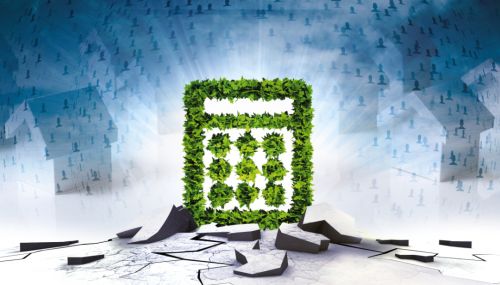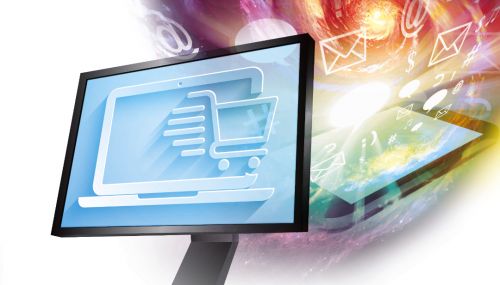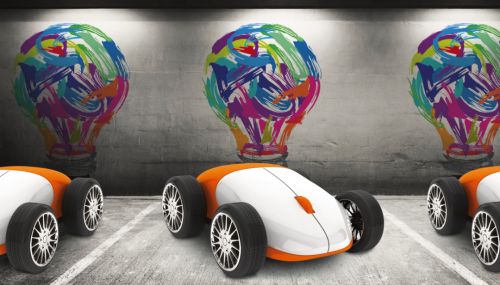All
Neo-Traditional Marketing
by Richard Rutigliano, PriMedia, Inc.

How digital media has helped revitalize print publishing and marketing
Hunt Valley, Maryland-headquartered publishing house Sheridan included in its June 2017 e-newsletter an article titled, “Print Magazines: Have We Come Full-Circle?” In it, Sheridan noted how over the past few years, “quite a few digital-only publishers have been branching out — or back — into print.”
This idea might come as a surprise to the average eBook reader or anyone who’s traded in daily newspaper delivery for a digital subscription. Indeed, since the rise of the internet, one of the biggest stories in the publishing world has been the ever-imminent “death of print” and how it will change communication as we know it.
Well, yes and no. Of course, no one can dispute that the internet and mobile technology have forever altered the course of communications. (And no one in their right mind would.) However — and make no mistake, this is a huge “however” — as it turns out, print publishing and marketing have actually in recent years had some new life injected into them, from digital media of all places.
Truth be told, it’s not a totally unforeseen development. A Forbes article from way back in September 2015 called “Paper Beats Digital In Many Ways, According to Neuroscience” stated that, “those marketers who have been looking forward to the day when print content is gone entirely may be surprised by the latest neuroscience research … it appears that a multi-channel approach that leverages the unique benefits of paper with the convenience and accessibility of digital will perform the best.”
As ever, customers want the best of both worlds. Publishing houses and advertising agencies have taken note, and many of their clients have too. With this in mind, energy marketers would be wise to take a good, long look at their customer communications strategies and ask if they’re hitting the right mix of print and digital media.
To be clear, it’s not just about finding the perfect ratio of paper-to-electronic communications — yes, that’s part of it, but what we’re always looking for, and what you should be too, is a true symbiosis between mediums, wherein each fuels the other. It’s more than a balancing act. It’s a new, but familiar, customer communications strategy we like to call neo-traditional marketing.
In with the Old and Out with the News
One old, reliable energy-marketing tool that we’ve seen given second and now third lives is the company newsletter. Long considered one of the most convenient and practical ways to keep customers abreast of new products, services, programs, promotions, etc., print newsletters have in recent years been phased out by some home comfort providers looking to find space for more digital communications in their marketing spend.
Lately, however, we’ve been noticing something else, something that supports the notion that electronic media can breathe new life into print materials. What we’re seeing is that our most successful newsletters — the ones that get the best response from our clients and their customers — are those that apply the standards of digital marketing to the print medium.
That means snappier headlines, shareable content and a more open, minimal layout. These are the elements customers have continuously been exposed to and gravitated toward in today’s digital marketing communications, so it follows that those same foundations might now work in print media as well.
E-newsletters help teach energy marketers about the value of interactivity, in that they allow for so many more calls to action than simply “click here to contact us.” They empower marketers to drive consumers to specific web pages, blog posts and social media sites, each of which can provide further opportunities for customer engagement.
At the same time, e-newsletters teach us something about the economy of space. Try to stuff too much text into an email and your customer might just delete it; include only pictures and links, and the email is probably going to get picked up by spam detectors. Successful digital newsletters work within design parameters that reinforce brand identity, keep readers’ attention and generate clicks.
Carry those same principles over to a print newsletter and you begin to get a pretty clear picture of what I mean by neo-traditional marketing. The “neo-trad” newsletter tells a story, with articles that build upon each other while prompting the reader to engage your company via multiple channels, including not only a phone number and reply card, but also your website, blog and social media sites. And like those platforms, it isn’t so heavy on copy that it bores your readers. It still educates them, but it does so in a way that’s fun, engaging and seamless.
Re-establishing Expertise
At the same time that printed newsletter articles have started to closely resemble blog or social media posts, we’ve noticed something funny on the other side of that equation. Companies are increasingly looking to use blogs and other online publications to establish, or in many cases re-establish, themselves as industry experts.
We see the reasons for this as two-fold: 1) Google continues to grant higher search rankings to pages with unique, authoritative content, like blog posts that are sourced or linked to by well-established websites; and 2) ironically, with fewer newsletters, brochures, and other printed materials in circulation, marketers need alternative avenues to educate consumers!
As a result, some energy marketers’ blog posts are getting longer, less promotional in nature, and more specialized in terms of their focus. It’s not as uncommon as it once was to see statistical analyses and technical discussions in home comfort blogs. Some companies are even going a step further, by contributing such articles to industry association websites or drafting informative reports known as white papers that they can then link to from their blog posts.
The white paper is another prime example of neo-traditional marketing in that it applies new design elements popularized by social media to traditional research reports, making them more attractive and more likely to be read and shared by the layman.
Modern design elements like info-graphics (digitally illustrated, sometimes animated one-sheets that present information like stats or percentages along with colorful graphics) are a staple of white papers and can do for them what charts and graphs did for traditional research papers — provide a visual representation of data.
A versatile communications tool, white papers can be published via electronic formats like PDF, embedded directly into websites, or even printed, bound and presented like traditional reports. Many websites will require visitors to sign up with a valid email to receive the white paper, thus creating a new avenue for online conversions.
Additionally, the infographics used in the white paper can be leveraged for (electronic and print) newsletter articles and social media posts, bringing the content cycle a full 360 degrees.
An Obvious Example
How are you reading this article right now? You might be one of the nearly 10,000 subscribers who have been mailed a physical copy of the September 2017 edition, or you might have picked up your copy at the Southern New England Energy Conference. On the other hand, you might be reading the digital version posted on OilandEnergyOnline.com and blasted out to our list of email subscribers.
You also might have arrived here via Oil & Energy’s Twitter or Facebook accounts, or the accounts of a reader or contributor who re-posted the article. Maybe that re-tweet will come with a comment that inspires an article in a later issue. The point is, you don’t have to look hard to find examples of the symbiotic relationship of print and digital media. You can see it in the layout and distribution of this very magazine!
Digital-friendly print media (or print-friendly digital media) might seem like an oxymoron wrapped in a paradox, but really, it’s not that complicated or far-fetched. No matter how much time we spend staring at the screens of our smartphones, the world around us all is physical, solid, tangible.
It’s hard to say the same for the digital deluge of emails we receive daily. Think of how quickly you sometimes press “Delete” or “Mark as Spam” without reading past the subject line. So-called snail mail, on the other hand, enforces engagement simply by being seen and handled. Attention spans shrank in the digital era, yet it’s still printed materials that grab readers’ immediate attention.
Whether digital media has hit a ceiling or print is experiencing a renaissance is hard to tell. One certainty is that the strongest traditions live on. They evolve to survive — but they don’t disappear. So it goes with neo-traditional marketing.
Print and digital publishing, newsletters, blogs, social media, white papers, ghost writing and graphic design are all parts of PriMedia’s toolkit. For help crafting your neo-traditional marketing materials (or a complete campaign), please give me a call at 800-796-3342 or contact me online at goprimedia.com.
Related Posts
 Show Your Work
Show Your Work
Posted on April 17, 2024
 Beyond the Gateway
Beyond the Gateway
Posted on March 12, 2024
 Fill Your Idea Parking Lot for 2024
Fill Your Idea Parking Lot for 2024
Posted on February 12, 2024
 Known Knowns and Unknown Unknowns
Known Knowns and Unknown Unknowns
Posted on December 7, 2023
Enter your email to receive important news and article updates.
